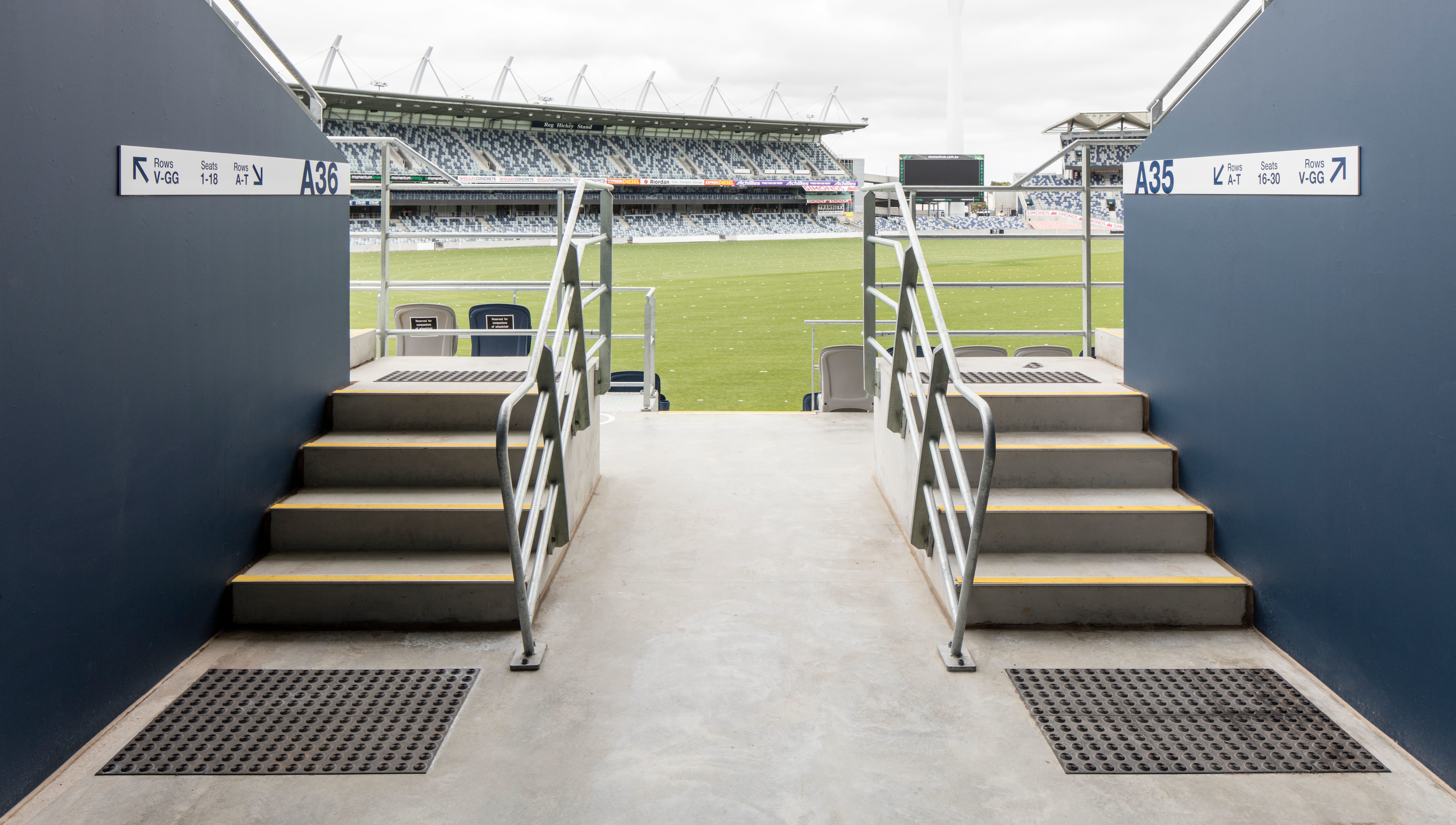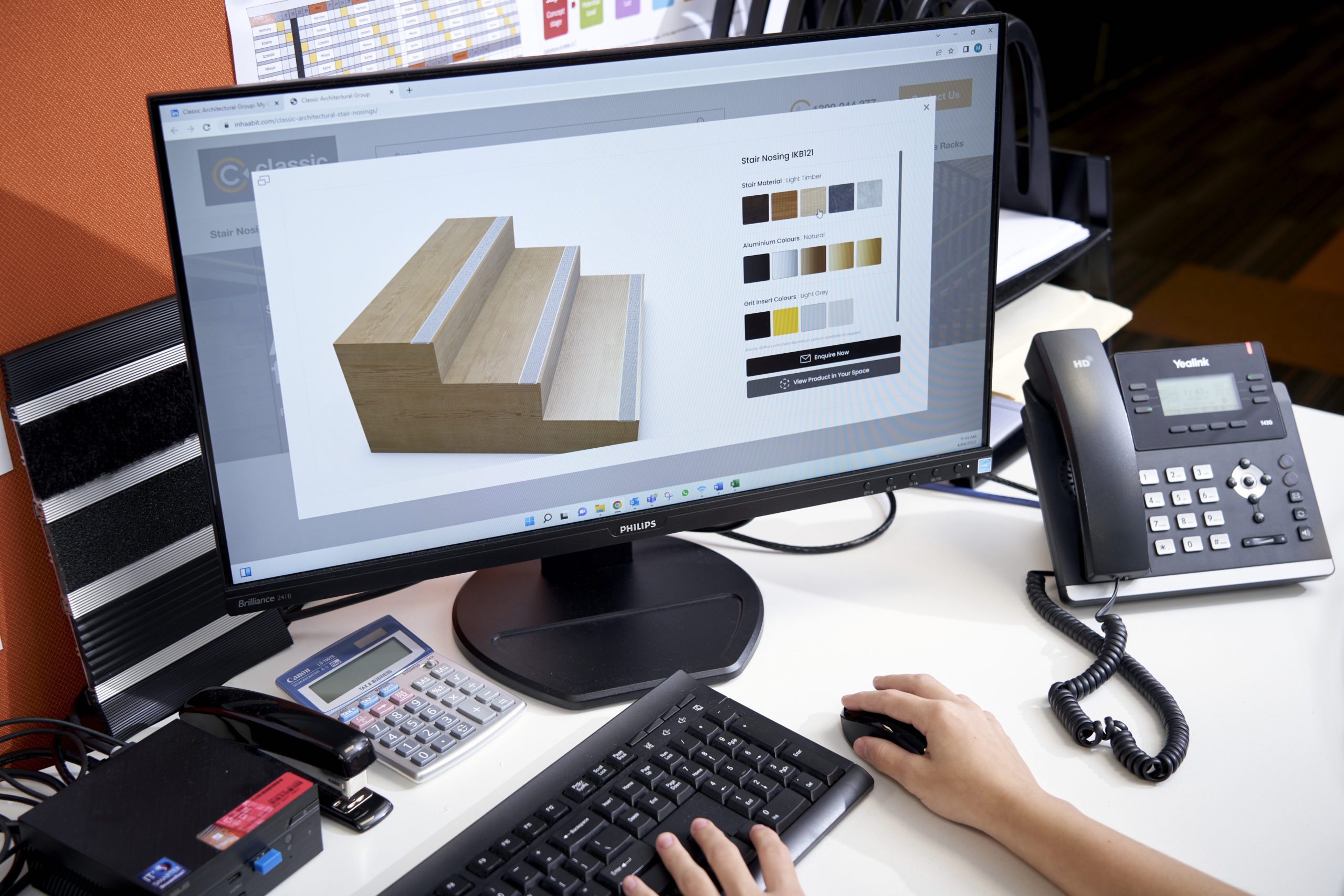Why is stair and floor safety so important for recreational facilities?
A proud sporting nation, sports and recreation have played a huge part in shaping Australia’s identity. From football to cricket or tennis, our obsession with sport filters into our everyday lives – so much so that Victorians have turned the AFL Grand Final into a public holiday every year.
With huge crowds flocking to recreation, sports and event facilities for their weekly sporting fix, ensuring public floor and stair safety is an essential requirement to prevent fall/slip-related injuries and accidents from occurring.
Some of the most common incidents involving pedestrians can occur at the following locations:
- Public entrances – Sports and recreational facilities or other, main entrances endure high traffic of people leaving and entering, escalating the risk of falls, trips and slips. The tracking of dirt, debris, sand particles and moisture not only exacerbates the problem but can also cause the deterioration of your interior flooring surface.
- Public stairways – Due to factors such as poor stair design and construction principles, falls on stairs account for over 60% of slip, trip and fall deaths in buildings. The installation of visual cues is critical for helping people coordinate their gait during ascent and descent. This is particularly important for the vision impaired and in poor lighting or wet conditions where there is an increased risk of a misstep.
- Escalators & ramps – Being moving structures, escalators can pose an added risk. Particularly for the vision impaired, it is important that all pedestrians can clearly determine where the escalator begins and ends. On the other hand, ramps result in a sudden change in incline which can be quite disconcerting to the vision impaired if not forewarned beforehand.
Aside from facilitating smooth traffic flow, these are costly mishaps that can be effectively minimised during the project development stages. Beyond the major sports venues and stadiums, other common public sports and recreation areas can include horse racing, aquatic centres, children’s sports arenas, community recreation centres, and outdoor recreation facilities.
Common workplace floor-related safety hazards in sports and recreation
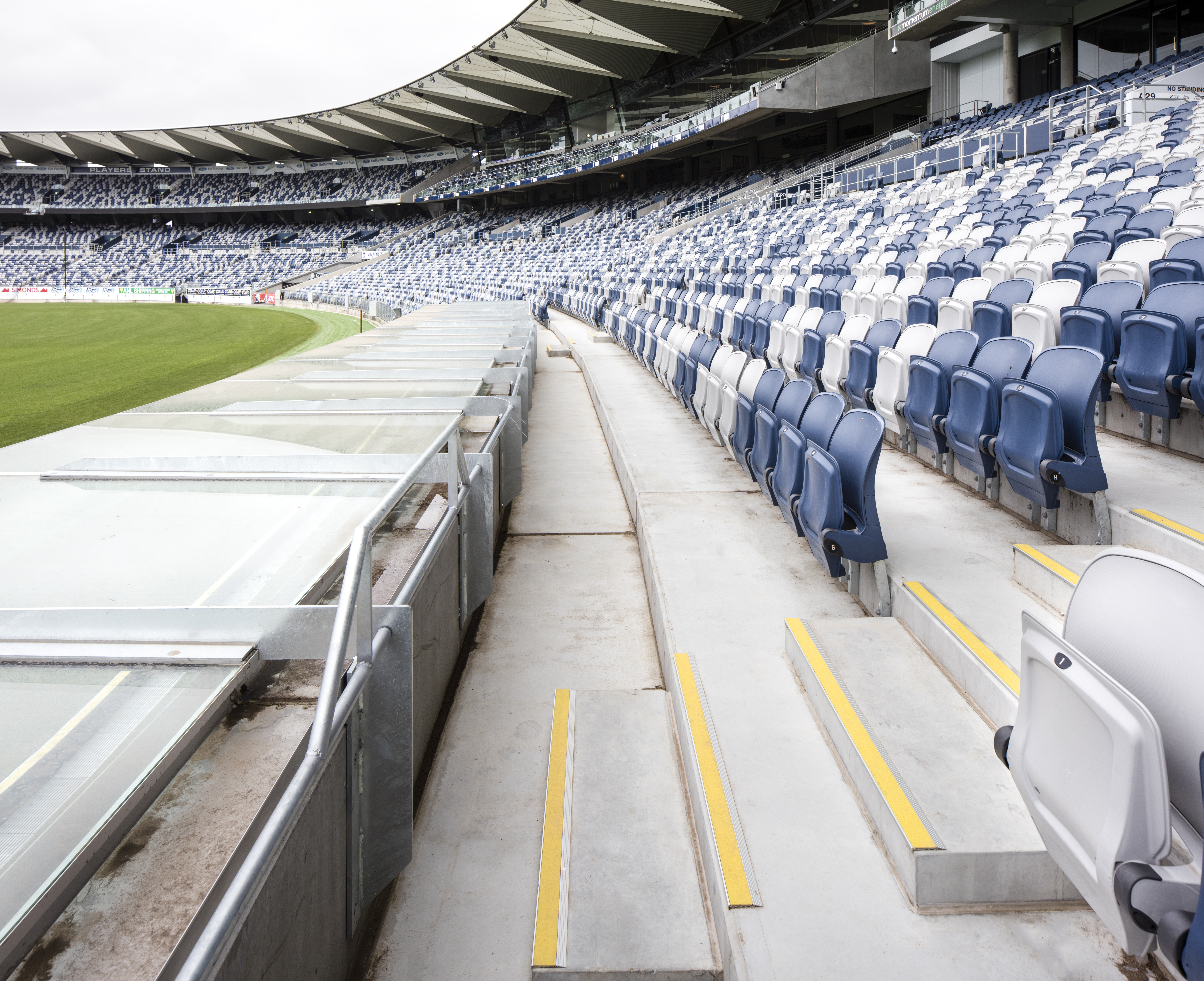
What is a floor hazard?
Some of the most common flooring hazards can include sloping surfaces, uneven flooring, damaged floors, irregular steps, protruding objects, greasy or slippery floors, worn out or frayed carpeting, dirt and dry contaminants, insufficient slip resistance and more.
What is the risk of a slippery floor?
To prevent slipping, especially in areas that may become wet or contaminated, floor surfaces require sufficient grip. The greater the thickness or viscosity of the contaminants, the greater the slip resistance required to prevent falls.
Serious slips, trips and falls may result in:
- Sprains, strains or other soft tissue injuries
- Broken bones
- Back and disc injuries
- Burns (if the incident occurs near hot surfaces or if the individual is handling hot fluids)
- Cuts (if the incident occurs near sharp objects)
- Death
Besides good housekeeping, one must also consider environmental contributing factors such as adequate light levels, minimised distractions and signage to highlight potential slip or trip hazards.
Assessing risks related to installing flooring systems
Poor design, construction and installation of flooring systems can lead to increased fall, trip and slip-related incidents.
While eliminating potential safety hazards, resurfacing floors and limiting access to high-risk areas are crucial to maintenance, prevention always starts with good workplace design.
How to enhance the safety of sports and recreational centres

Choosing the best safety flooring for a fitness centre
When choosing your flooring material and design, you should consider the following factors to minimise risk and prevent falls:
- Expected users and use conditions
- Level of traffic to predict standard wear
- Slip resistance when both wet and dry
- Changes between floor heights and surface materials
- Cleaning requirements to ensure continual maintenance and upkeep
On top of maintaining your facility’s presentation and cleanliness, commercial entrance matting is also a critical consideration for enhancing floor safety. People entering a building don’t often stop to wipe their feet so an entrance mat must be deep enough to ensure there are enough contacts between the entry matting and the soles of shoes to minimise the amount of dirt carried into the building.
Safety stair treads for sports and recreational centres
Stair nosing and treads are installed at the “nose” of a step, where people place their feet and weight on the stair. By adding a visible, anti-slip and sturdy surface to the edge of the step, they help to increase the safety of the staircase while minimising slip, trip and fall injuries. They also prevent the wear and tear of the steps to increase the overall lifespan of the staircase.
Stair nosings are not only necessary but also a mandatory requirement in public or commercial settings and must be compliant with Australian Standard AS1428.1 design.
Ensuring public safety of stairways, escalators & ramps
While everyday pedestrians may overlook tactile ground indicators, they are a crucial requirement for the visually impaired. Warning tactiles alert to the presence of potential hazards and directional tactiles assist with orientation guidance for a continuous path of travel. Together, these tactile indicators empower visually impaired pedestrians to independently navigate public environments with confidence.
There are also strict, mandatory Australian Safety Standards in place for entrance matting, stair nosing and tactile indicators in all public access areas. You can refer to AS 1428.1:2009 and AS1428.4.1:2009 for the specific requirements.
Learn more about the public applications of tactile indicators.
Compliance considerations for the Sports and Recreational Industry

Entrance Matting
The Australian Building Code recommends that a mat should have a minimum dimension of 1.8m from front to back which allows for 2 contacts from each foot. However, studies* have proven that fitting an entrance with 6m of an effective entrance matting system can stop 94% of all walked-in dirt and moisture.
Furthermore, Safe Work Australia requires businesses to eliminate the risk of slips, trips and falls “so far as is reasonably practicable” – entrance matting plays a huge role in public safety by minimising risk, and saving you from potential costly payouts.
*TUV Rheinland
Stair Nosing
According to AS1428.1:
- Stair nosings must be continuous across the full width of the stair tread.
- A luminance contrast strip that provides a strong visual clue of the tread/riser intersection must be included.
- The luminance contrast strip must be between 50mm and 75mm wide and cannot be set back from the tread/riser intersection by more than 15mm.
- The strip needs a luminance contrast of at least 30% with respect to the background material.
- When located at the front of a stair nosing, the luminance contrast strip cannot extend down the riser more than 10mm.
- Stair nosings are not allowed to project beyond the face of the riser.
- Stair nosing profiles may have a sharp intersection or a radius up to 5mm, or up to a 5mm x 5mm chamfer at the tread/riser intersection
These standards are compulsory in new construction, however, existing stairs in any publicly accessible areas should also comply to ensure a “duty of care” compliance is met.
Tactile Indicators
AS1428.4.1:2009 extensively covers the required safety standards of tactile indicators, here is a summary:
Size and Shape Requirements
- Warning/hazard tactile indicators incorporate a grid pattern of studs at 50mm-centres. They are raised, truncated cones with a base diameter of 35mm, no higher than 5mm and a top diameter of 25mm.
- Directional / leading tactile indicators to incorporate rows of parallel bars with rounded ends spaced 50mm apart, end to end, and at 75mm centres side by side. They also have a chamfered side with a base of 35mm by approx. 285mm long and 5mm high.
Colour Requirements
- Tactile Indicators must have a luminance contrast to the surrounding ground surface, i.e., light grey tactile indicators installed on light grey concrete will not achieve a luminance contrast.
- 30% minimum luminance contrast to the surrounding ground surface is required where the Tactile Indicator is in the form of a precast concrete paver or tile or a mat with a uniform colour (defined as being ‘integrated’).
- 45% minimum luminance contrast to the surrounding ground surface is required where the tactile indicator is an individually drilled and fixed stud or bar (defined as ‘discreet’).
- 60% minimum luminance contrast to the surrounding ground surface is required where the individually drilled and fixed tactiles have a different colour top than the side – the 25mm diameter top must exhibit the minimum 60% luminance contrast. If two colours are being used, the 60% rule also applies.
Learn more about Australian safety standards in public spaces. You will also need to consider state-specific Work Health and Safety (WHS) legislation.
Classic is dedicated to making sports and recreational facilities safe for all members of the public
We have a range of architecturally-designed floor and stair safety solutions popular across sports and recreational facilities.
Entrance Matting: Classic Integra Vantt
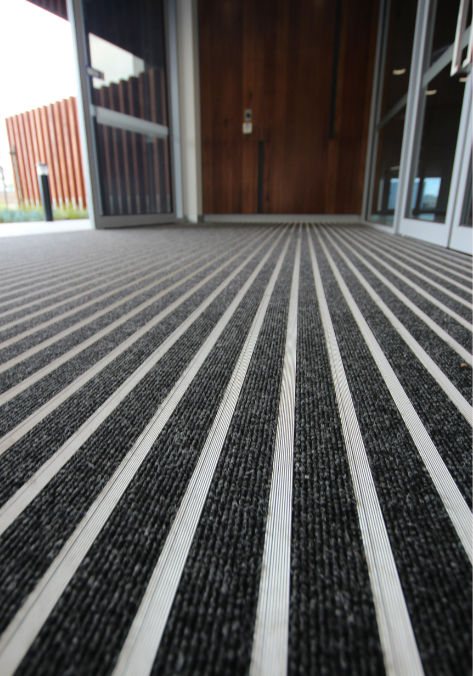
Our Classic Integra Vantt commercial entrance matting solution is our most customisable product, architecturally designed and suitable for curved applications such as revolving doorways. Available in a wide range of colours to enhance the entrance appearance, safety and acoustics.
- Roll-up aluminium matting
- Architecturally designed
- Suitable for curved applications
- Rubber cushioned back for reduced noise
- Flexible interlocking system
- Wide colour range
- Medium to high traffic applications
- Interior use
- Wheelchair friendly
Stair Nosing: Classic Tredfx DKR104
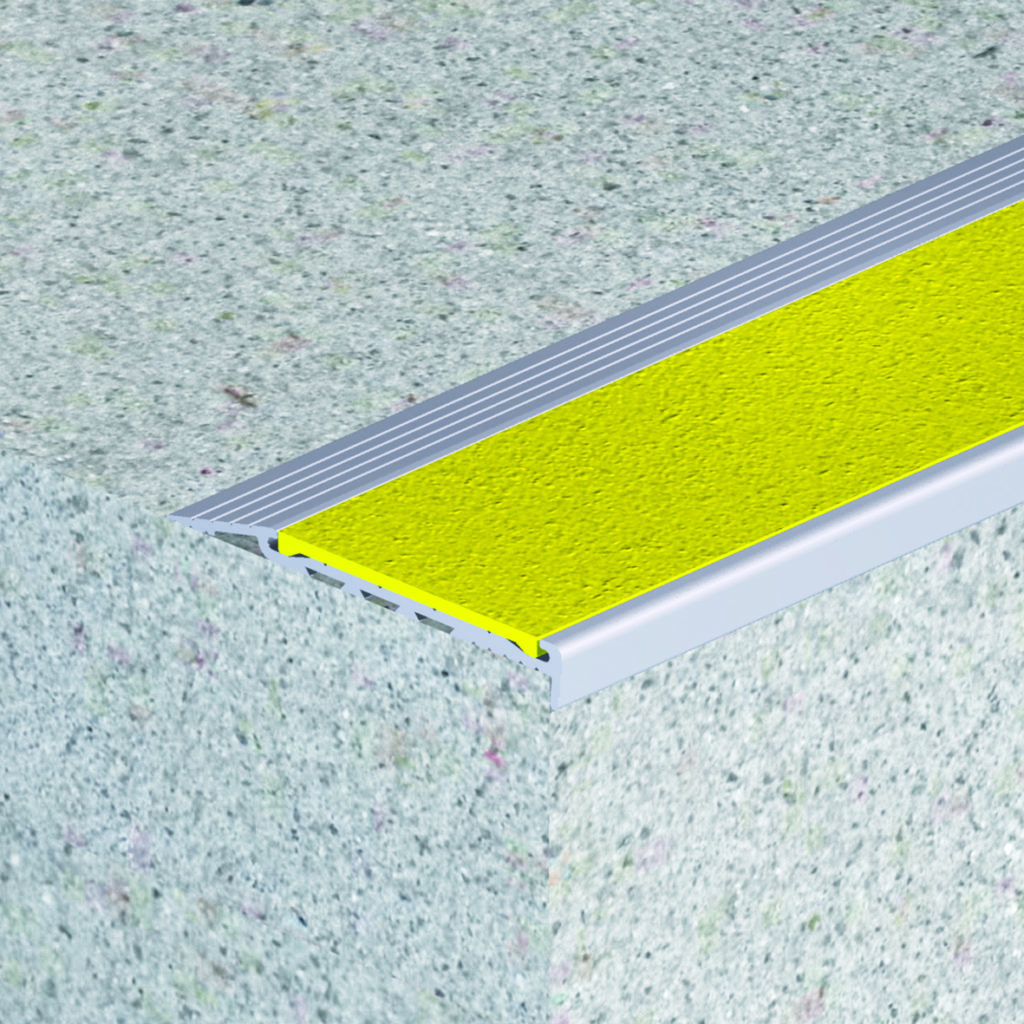
Classic Tredfx DKR104 is our premium aluminium safety stair nosing solution for surface mount applications. Durable, hard-wearing and contemporary, this stair nosing offers high slip-resistance as well as smart looks for both interior and exterior applications.
- Aluminium – hard-wearing
- Surface mount applications
- Interior and exterior use
- Ramped back, short raked front
- Grit insert
- Contemporary appearance
- Extremely durable
- Pre-drilled and countersunk
Tactile Ground Surface Indicators: Classic Tredfx SH60N
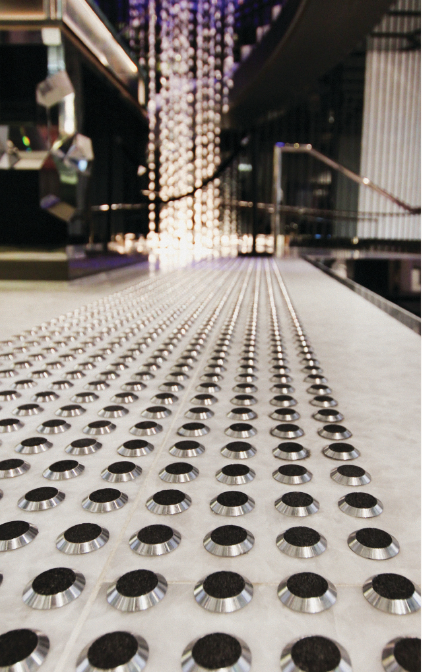
Classic Tredfx SH60N is a stainless steel TGSI with grit insert, the best and longest-lasting solution for retro-fitting interior and exterior applications. These are available in various styles to allow the surrounding floor surface to show between the tactile indicators for an architecturally superior appearance.
- Anti-slip with grit insert
- Sloped sides for safe transition
- Rear nylon stud
- Interior and exterior use
- Expansive range
- T316 grade stainless steel
Explore some of Classic’s past sports and recreation projects with a stair and floor safety-first focus
Classic offers architecturally designed public access solutions to ensure floor and stair safety for all. For your inspiration, see our most recent safety-first projects below:
- Kardinia Park (GMHBA Stadium) – Geelong, Victoria. Read the case study.

- Rod Laver Arena (Melbourne Park) – Melbourne

- Kia Arena (Melbourne Park) – Melbourne
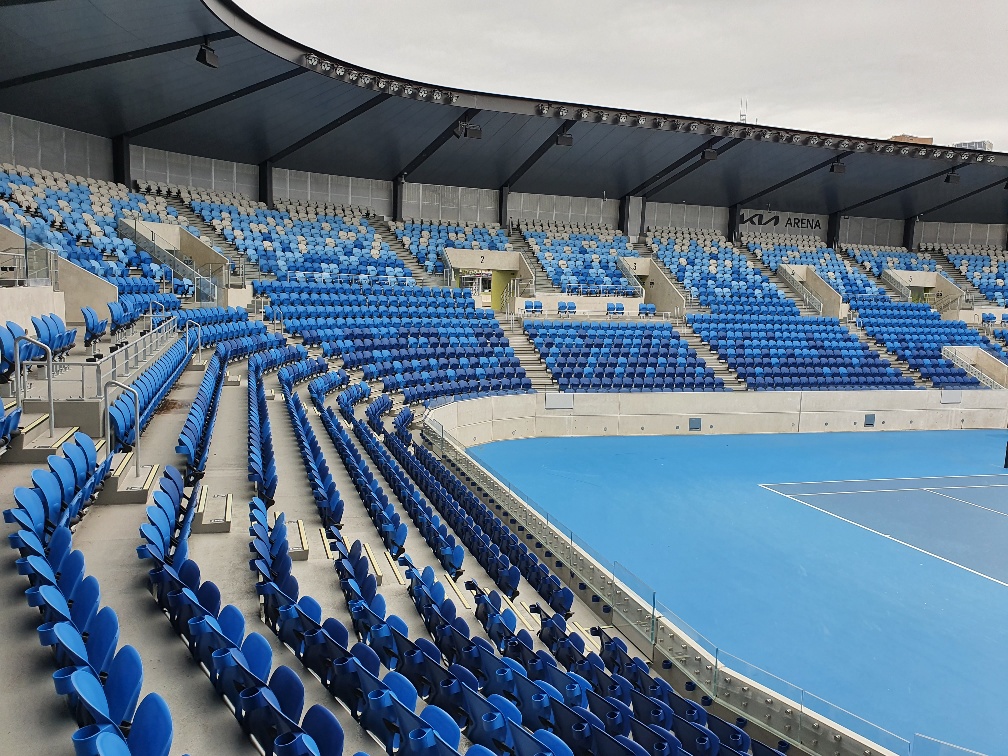
- Melbourne Sports Centre (MSAC) – Parkville, Victoria. Read the case study.
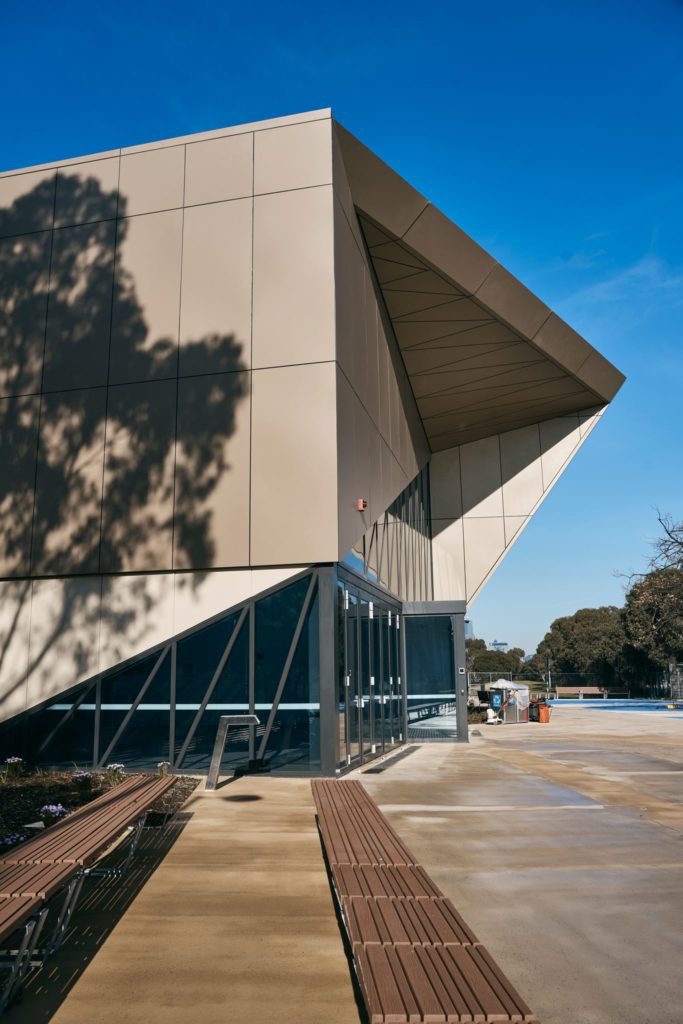
- Queensland Ballet HQ – Brisbane
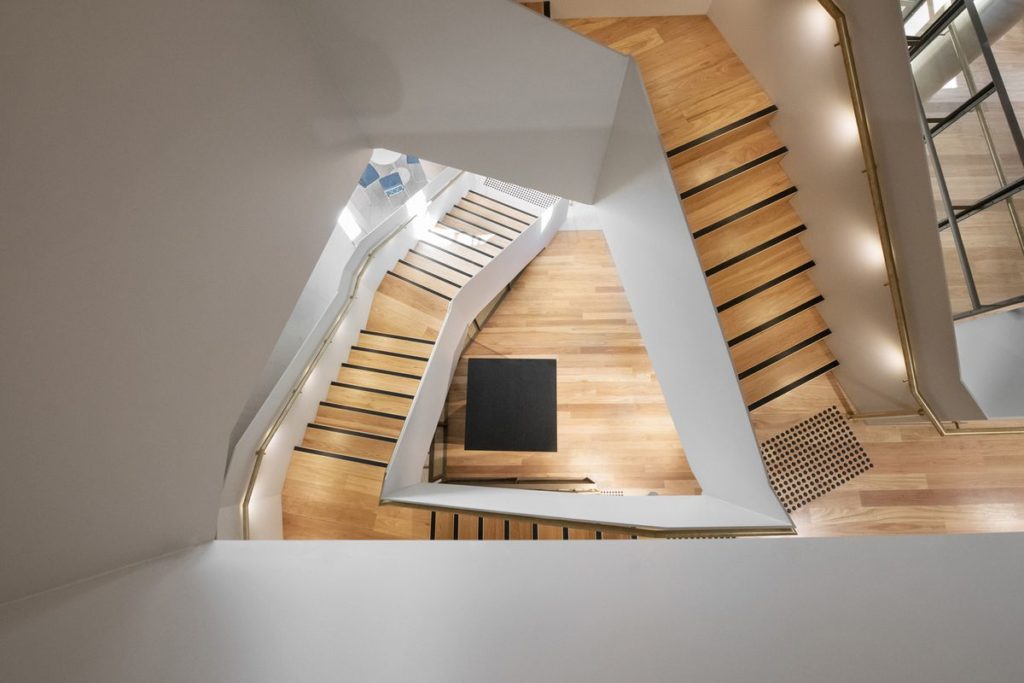
- Sydney Cricket Ground (Moore Park) – New South Wales
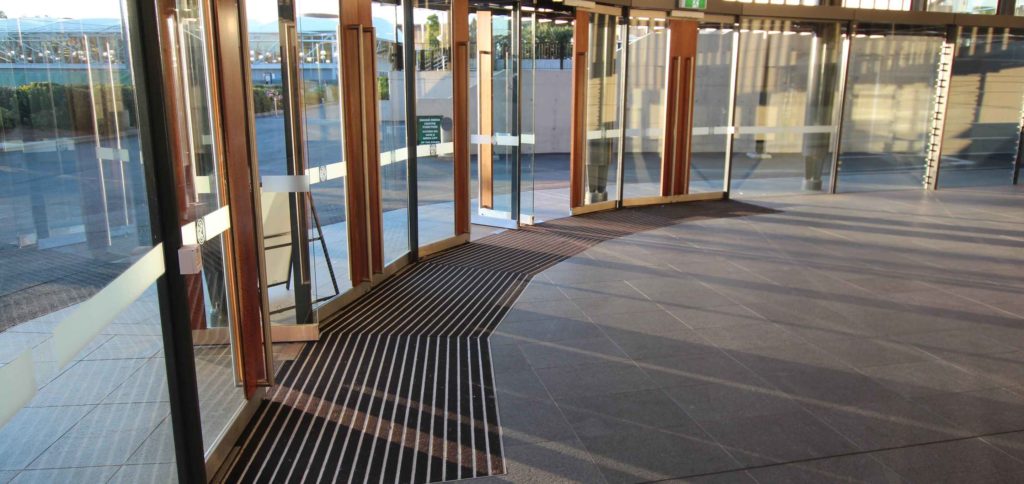
- Randwick Racecourse Winx Stand – New South Wales

- Goulburn Aquatic and Leisure Centre – New South Wales
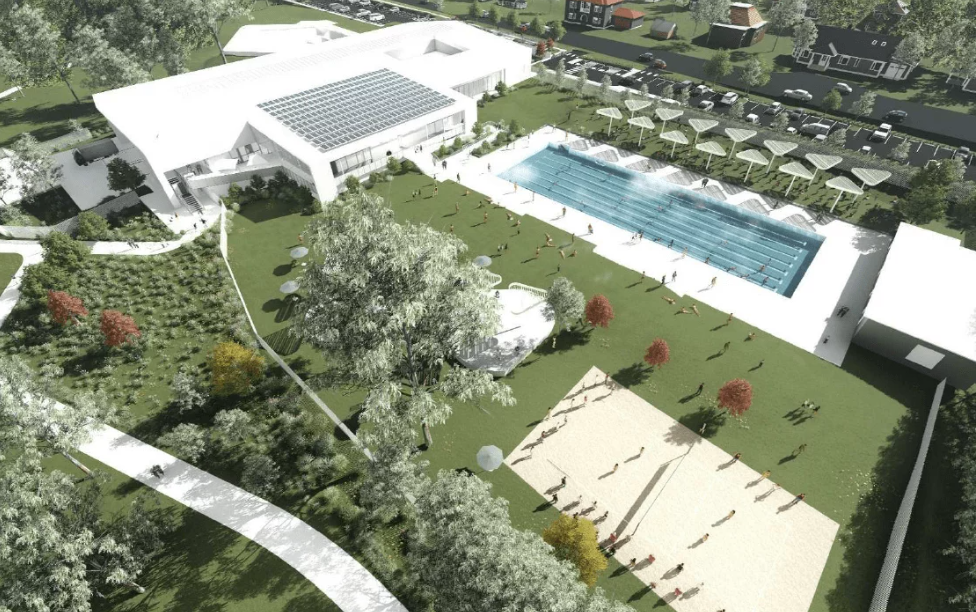
- Stromlo Leisure Centre Aquatic – ACT

- The Gabba (Woolloongabba) – Queensland

With floor and safety solutions for all industries, we’re here to help you get a step ahead
With safety and access being the key focus in public spaces, Classic Architectural Group is the trusted name for commercial entrance matting, tactile indicators and stair nosing in Australia. We have offices in Melbourne, Sydney and Brisbane, with representatives in the other states, supplying your projects with innovative solutions that are versatile in design, colours and application.

Building on an enduring commitment to quality and service, our team can also ensure that your project complies with all safety standards and compliance checks. Our expertise extends beyond floor and stair safety for sports and recreational facilities, covering all areas including education, healthcare, hospitality, industrial, office and residential.
From consultation and supply to installation and maintenance, you’ll always have certainty of supply with us. If another supplier lets you down, you can trust us to step in and get you back on track – that’s our guarantee!
To learn more about our public access solutions, please contact our team by calling 1300 244 377 today.
